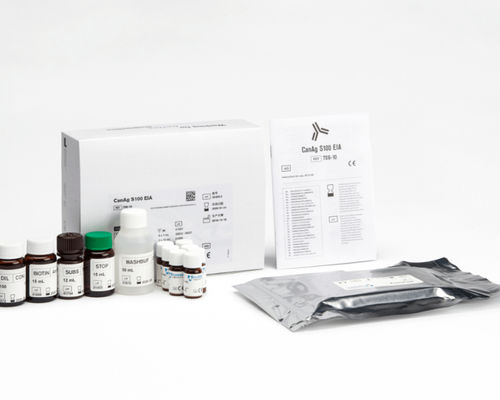S100 is a 10 kDa protein belonging to the S100/calmodulin/troponin C superfamily of EF-hand calcium-binding proteins. S100 was originally isolated from bovine brain and considered a glial-cell specific protein1. Today, 20 monomers of the S100 family have been identified based on structural and functional similarities2,3. Most of the S100 proteins exist as dimers and are expressed in a cell-specific manner. Two of the S100 monomers, designated S100A1 and S100B4 are highly conserved between species and are found as homo- (BB) and heterodimers (A1B) in central nervous system glial cells and in certain peripheral cells eg. Schwann cells, melanocytes, adipocytes, and chondrocytes (5). S100A1B and S100BB are also present in malignant tissues, most notably in melanoma and to a lesser extent in glioma, thyroid cell carcinoma and renal cell carcinoma2.
Determination of S100B in serum has been shown to be clinically useful for prognosis and treatment monitoring of patients diagnosed with malignant melanoma6-9. Studies also suggest that S100B may be useful in the management of patients with brain damage from eg. traumatic head injury, perinatal asphyxia, cardiac arrest, cardiac surgery and stroke

